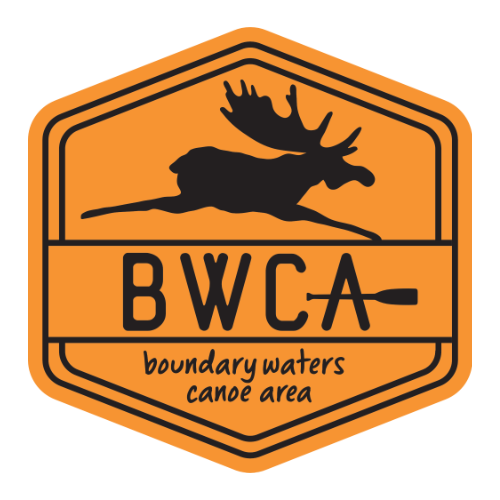BWCA Entry Point, Route, and Trip Report Blog
July 01 2025
Entry Point 60 - Duncan Lake
Number of Permits per Day: 2
Elevation: 1432 feet
Latitude: 48.0709
Longitude: -90.4517
Duncan Lake - 60
Threading The Weather Needle On Little Indian Sioux
Entry Date:
June 13, 2024
Entry Point:
Little Indian Sioux River (north)
Number of Days:
5
Group Size:
2
We had planned to camp on one of the Loon lakes or maybe Slim but after paddling to Upper Pauness and finding it to be pretty windy so early in the day we opted to head east towards Shell and then north to the far end of Heritage Lk. Our goal was to avoid paddling in big open areas exposed to the wind. Although we have lots of whitewater wilderness traveling experience, we don’t know much about paddling on wind tossed lakes in a canoe. One of our goals on all our adventures is to not do anything stupid and end up “in the papers”. This detour added a few portages but we like to opportunity to get out and stretch our legs fairly often. We made camp on the north end of Heritage, tucked away from the wind and enjoyed a pleasant sunny evening on a lake all to ourselves.
Lakes traveled: LISR, Upper Pauness, Lower Pauness, Shell, Heritage
Paddle 7.6 mi, portage 387 rods
We continued north into Slim, a quiet, beautiful lake. As we continued towards Finger Lk we made the climb from South Lk up to Steep Lk via a 120R portage. I dare to say I really enjoy portaging but this one was challenging, mostly because it was pretty steep. Steep Lk was beautiful and we really considered stopping early again and making camp but we pressed on. Next it was on to Eugene, Little Beartrack, and Beartrack. The 200R into Thumb was amazing. It was long but pretty flat and dry. Pink Lady Slipper orchids grew in large bunches all along the portage. A short paddle across Thumb and an even shorter portage brought us to Finger Lk and hopefully an open campsite on the island. The campsite was empty and a very welcome sight. The site is elevated with lots of larger pines and little brush. Best of all, it has seen little use and the forest floor was covered in a dense layer of pine needles. For me, it’s worth the extra effort to travel beyond the higher traffic areas. We enjoyed a quick dip in the lake and a relaxing evening around the campfire.
Lakes Traveled: Heritage, Loon, Little Loon, Slim, Section Pond, South, Steep, Eugene, Little Beartrack, Beartrack, Thumb and Finger. Paddle 10.8 mi Portage 931 rods
Lakes traveled: Finger, Finger Ck, Thumb, Thumb Ck, Gebe Ck, Gebe, Green, Rocky and Oyster. Paddle 7.7mi, portage 395 rods
Next up was the portage into Lynx. It wasn’t too bad just long. Near Lynx there is a stretch where it appears a pond breached and the ensuing rush of water scalped the vegetation and soil right off the bedrock. Near the channel into Little Shell we spotted the first people we had seen since our second morning. The weather had turned sunny but as we crossed Little Shell, rain clouds were closing in fast. Our luck continued as the rain didn’t fall until we were on the portage into Shell. We took cover under the big cedar trees until the rain slowed to a light drizzle. On Shell after circumnavigating the lake, we found most of the campsites were taken. The southernmost site turned out to be an unexpected gem. At first glance it was pretty exposed and hard used site with a fair amount of brush. Upon further inspection behind all the brush we found great shelter beneath towering White pines. The rain tapered off and by late evening the sun peeked out and we enjoyed a nice sunset fire. So far we were pretty darn lucky with the weather. I noticed someone had scratched shallow trenches around the tent pads at this site. I’m guessing the heavy rains, from the night before we entered the BWCA, had flooded peoples tents. We love our hammocks and this is an example of why.
Lakes traveled: Oyster, Hustler, Ruby, Lynx, Little Shell, Shell Paddled 6.2 mi, portaged 545 rods
Lakes Traveled: Shell, Lower Pauness, Upper Pauness, Little Indian Sioux River Paddled 5.4 mi, portaged 337 rods
Trip Totals Paddled 37.3 miles and portaged 2656 rods (single portage)
In summary, we saw several advantages of just going by ourselves and Fin such as simplified logistics, being able to be flexible with our daily goals and it was easier to find suitable campsites when you only need spots for two hammocks and a bug tent. That being said we missed the extra company in the evening, it’s just nice to share special times like this with friends and family. We definitely appreciated the isolation and less used campsites that longer days afforded although I would build in a rest day next time. This loop route was really a great experience for us.














